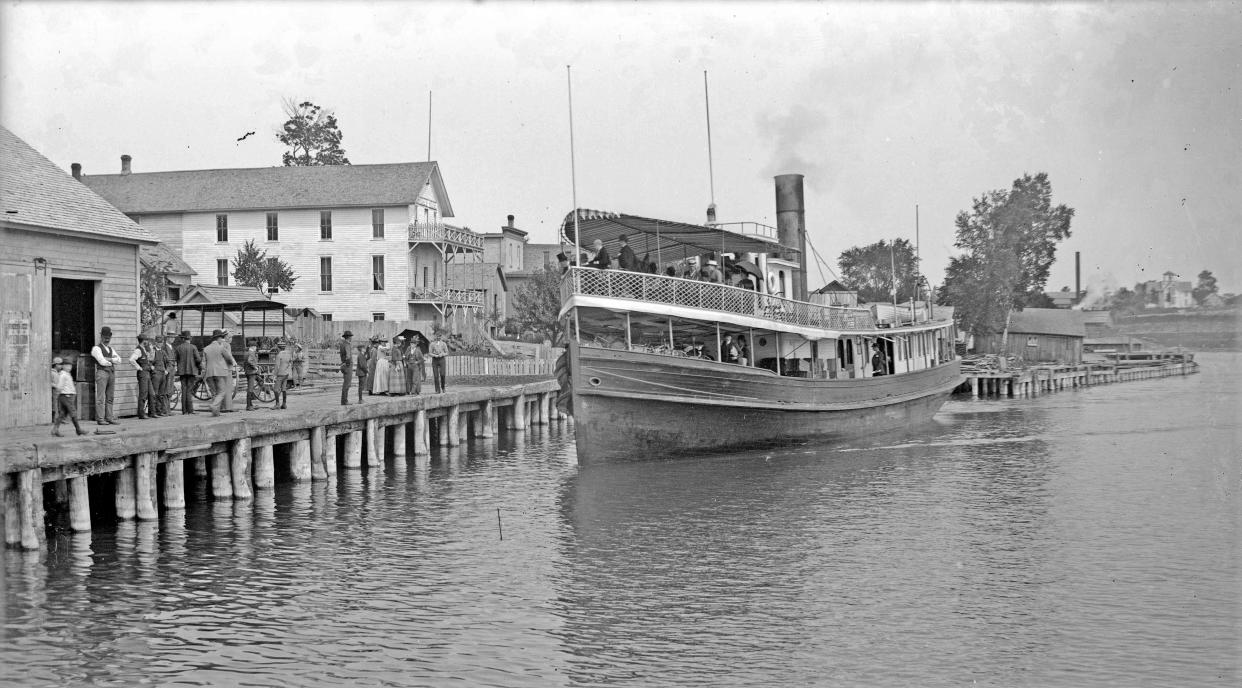Looking Back: Skating on thin ice

CHARLEVOIX — One hundred and fifty years ago, the Jan. 10, 1874 Charlevoix Sentinel reflected the American frontier mentality that in many places still exists.
“The law don’t exactly justify you in shooting a man who steals your wood, but the times do.” Sound familiar, a patent excuse for justification of violence as a means to gain any end?
Same issue: “A couple of old ladies got tipsy on the communion wine at a recent church service in Kent County, and struck up ‘Johnny Fill Up the Bowl’ before the astonished congregation could hire them carried out on shutters.” Gotta watch out for them churchgoers.
Editor Willard A. Smith warned: “SKATING.—The lovers of this healthful sport have been indulging during the week to an extent which constrains us to caution them against circulating indiscriminately on Round Lake. The ice on this lake is at all times extremely treacherous.”
Hardly a winter ever went by without some reportage of both near-calamitous and deadly skating accidents.
Smith also reported on a man “living near here, lately returned from a hunt near the headwaters of the Manistee, bringing about $70 worth of furs, among which were four bear, three martin, ten mink, four coon, and a number of muskrat skins.” $70?
“CHARLEVOIX HOUSE.—This hotel is about to be vacated by Louis Gebo, who returns to his residence on Clinton Street, and A. J. McLeod, who has an established reputation as a model landlord, takes possession, having leased it for a term of years.” It has never been discovered where this hostelry was located other than it sat on the north side of the channel near the bridge. The Sentinel started publishing in April of 1869, and no mention of the construction or opening of a new hotel was ever mentioned up to this 1874 date. The first known Charlevoix hotel was the Fountain City House on Pine River Lane, today’s site of the Weathervane Terrace, in 1867, so the Charlevoix House must have gone into business shortly after that.
Subscribe: Check out our offers and read the local news that matters to you
Again, Willard Smith raised his bullhorn to praise the wisdom and practicality of commercial advertising — either use it or lose it. “ADVERTISING DON’T PAY.—Since the commencement of the panic, Wm. Groh, a grocer in Kendallville, Ind., tried the experiment of liberal advertising. He inserted a three-column advertisement in every paper in the county, announcing not only his goods, but the prices thereof. In one day, lately, he made 1,703 cash sales, amounting to $2,563.12, his customers coming from every part of the county. What would have been the total receipts of the day’s sales without advertising? Probably about $125. And yet, some say that advertising don’t pay!” That astute man’s one-day sales total today would be around $71,200.
One hundred years ago, the Sentinel of Jan. 10, 1924 reported the “S. S. FRIANT LOST. In Lake Superior Sunday, Formerly Sailed on Local Waters.” The empty passenger steamer had foundered in the icy waters of Lake Superior, but its crew of eight were able to get off and onto an ice floe, from which they walked two miles to Two Harbors, Minnesota.
Beginning in 1884, the spanking brand new Friant served the Harbor Springs-Petoskey-Charlevoix-East Jordan route, and the handsome boat became one of the most photographed vessels of the era. Many of the larger passenger vessels that left Chicago would disembark a large number of their passengers in Harbor Springs, from where these travelers were delivered to the three other ports after the semi-emptied steamer continued on to Mackinac Island. And Harbor Springs was where they were picked up for the return voyage to Chicago.
But here was one instance where the arrival of the railroad in Charlevoix in 1892 did not benefit one segment of its commercial landscape. Because the Friant relied so heavily on this particular route, once the railroad arrived here there was virtually no longer a demand for a Charlevoix-Harbor Springs water connection. Railroad passengers could disembark now at our depot, continue on to Petoskey, and venture from there to Harbor Springs by rail several times a day. All of a sudden the Friant disappeared from the Charlevoix scene, and went up to Sault Ste. Marie “for service in the lake in which she was finally lost.”
The Charlevoix hospital that same issue gave its monthly report on its financial status. It ended 1923 with $254.06 in the bank.
“BETTER LATE THAN NEVER!” crowed the Charlevoix Courier of January 9, 1924. “Beavers Finally Get a Doctor of Their Own. Dr. Thomas Palmer is Appointed By State Board of Health to Winter There. The islanders are going to breathe a little freer this winter, now that they don’t have to depend on aeroplanes and dog sledges when dire need arises for a doctor. They hope that change is going to be permanent.
“So far this winter, we are told, there hasn’t been much need for a doctor, as the island people are ‘disgustingly’ healthy as compared with their mainland neighbors and during the Christmas holidays, when as a rule doctors everywhere are busy repairing the effects of too much candy, nuts and pie, there was hardly a tummy ache among them. However, you can never tell what is going to happen.” Wise words.
— Contact reporter Annie Doyle at (231) 675-0099 or adoyle@charlevoixcourier
This article originally appeared on The Petoskey News-Review: Looking Back: Skating on thin ice

